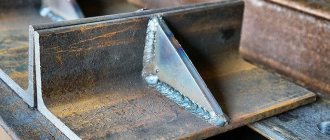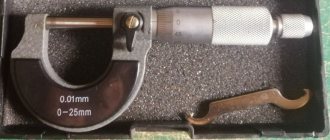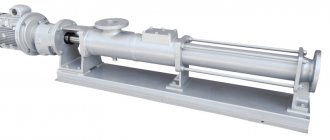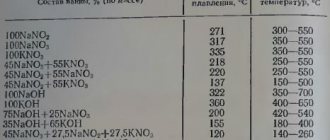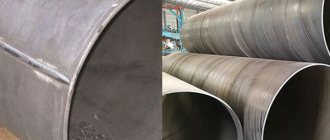Hello dear reader. We live in an age of increasingly complex technology. The modern pipeline system both at home and at work is essentially an analogue of the circulatory system - without it, modern life is impossible. Our requirements for comfort at home and increased productivity in the workplace include the need for quick, easy and, if possible, automatic control of the operation of piping systems. And here shut-off and control valves come to our aid - we will talk about them in this article.
What it is
This is a type of pipeline fittings that combines the functions of control and shut-off mechanisms and regulates the parameters of the working environment:
- consumption;
- pressure;
- temperature;
- liquid level;
- mixing media in given proportions and some others.
The main control method is to change the flow rate of the medium by changing the cross-section of the passage of the fittings (up to complete shutdown of the pipeline)
Reinforcement parameters
When considering control valves, the following parameters are highlighted:
- Bandwidth. It is equal to the consumption of the working medium. The parameter is divided into conditional throughput, initial, and minimum. There is relative and actual throughput.
- The throughput characteristic shows the dependence of throughput on the stroke of the valve.
- Relative leakage.
- Range of regulation.
- Regulation zone.
Application area
Control valves are widely used in all spheres of human activity: in industry, in the mining complex, construction, agriculture, residential complexes, and urban infrastructure. By area of application it is:
- general purpose - serial devices for all areas of human activity (from engineering equipment for housing to industrial enterprises); work in non-aggressive environments with low pressure and temperature;
- for special operating conditions - for work in conditions of high or low temperature, high pressure, aggressive environments;
- You can also highlight special fittings - products made to special order, often in a single copy, for exclusive equipment or testing new experimental equipment.
Features of butterfly valves
Such valves are often used as control valves. They have a number of advantages. Butterfly valves do not require much space to install. The use of these elements guarantees high performance. They do not reduce operating pressure. Butterfly valves can be used at different temperatures. The advantages of the parts include low cost per unit.
Butterfly valves are used to handle viscous liquids. They are needed for regulation and are also used for ball valves.
Classification and types
Classification by control method:
- with manual control;
- drive – large equipment is controlled using a pneumatic or electric drive;
- with remote control - controlled using transition devices (all kinds of rods, speakers, etc.);
- with automatic control - adjustment occurs without operator participation: either directly when the pressure of the working medium is applied to the valve, or when the drive is turned on by a signal coming from the control and measuring equipment.
Classification by functional purpose:
- shut-off and regulating;
- regulating;
- distribution and mixing (three-way or multi-pass);
- mixing and adjustment;
- safety;
- protective;
- control room (used to determine the liquid level in boilers, tanks, connect pressure gauges, thermometers, level indicators);
- reduction or throttling (reducing pressure in the system);
- phase separation (condensate traps, air vents and oil separators).
By installation method: on threaded connections (coupling, pin-type), on flanges. Control valves are not installed during welding.
Types of shut-off valves by design:
- control valves (gates); including shut-off and control and mixing valves;
- taps;
- valves;
- flaps.
Prices
| Types of jobs | Unit change | price, rub. | Note |
| distribution cabinet installation | PC. | 2250,00 | with installation of supply and control valves |
| collector installation | node | 75,00 | per 1 pipe |
| installation of air defense system | PC. | 180,00 | tap, sump, check valve, etc. |
Design of shut-off control valves
The design of the control equipment is similar to that of the shut-off device.
The most common type is a control valve, which changes the flow of working fluid. In the direction of flow of the working medium, there are passages (for straight sections of pipelines); angular – rotate the flow of the medium by 90°; mixing (three-way) - mix two flows into one. Structurally, the valves consist of a body with a seat inside, a spindle with a handle, and a locking element; There are single- and double-seat, cage, membrane, spool valves.
Shut-off and control valve is a single-seat valve that can completely shut off the flow of the working medium or regulate its flow.
Mixing valves are used to mix several media in certain proportions, yielding a medium with certain parameters (composition, temperature) at the outlet. For example, the well-known household mixer belongs to this type.
Gate valves consist of a body, a spindle, and a locking plate that moves perpendicular to the flow of the medium.
The dampers have a rotary-disk locking system: the disk rotates around an axis perpendicular to the flow of the medium.
In faucets, the shut-off element rotates around an axis using a handle in the body.
Control valves
These devices are used to control the environment in the pipeline. This process occurs by changing the flow area and pressure under different conditions. Suitable for pipelines that transport water, oil or gas, water vapor, chemicals, etc. Often used in heating systems, as they allow you to control coolant flow.
The device has many advantages:
- the mechanism has a simple design, but at the same time copes well with the assigned tasks;
- is distinguished by its reliability and long service life, regardless of operating conditions, since materials that are resistant to aggressive factors are used for production;
- characterized by versatility.
Among the variety of standard sizes and types, it is easy to choose an option to solve any given problem.
Main features and differences
Control valve elements:
- housings;
- rod;
- sealing gaskets;
- shutter;
- fastenings, etc.
For the production of the body, cast iron, alloy, structural or stainless steel, and brass are used. When choosing raw materials, take into account where the product will be used.
The operating principle of the control valve is simple. The force on the drive mechanism is transmitted through the rod to the valve. It, in turn, rises or falls, thereby reducing or increasing the flow capacity of the pipe. When lowered, the cross-section decreases, which leads to a drop in pressure in the hydraulic system. If the valve is closed completely, the pressure will be zero. Automatic control valves are equipped with a hydraulic, pneumatic or electric drive. Special sensors record changes in pressure, which leads to a narrowing or expansion of the passage opening.
Classification of control valves
Depending on the design features of the valve, adjustable valves are of the following types:
- Saddle. A plunger is used as a working element. It may differ in shape. There are 3 main types of plungers: needle, disc and rod. Valves are single-seated and double-seated, depending on whether the valve moves through one or two seats. Models with one seat are suitable for pipelines with a small diameter, while models with two are usually used on large pipelines.
- Spool valves. They differ in that the spool, which can rotate to a certain angle, is responsible for regulating the pressure and the passage of the medium. The main advantage of such devices is their ease of adjustment. It doesn't require much effort to control. The fact is that the transported medium does not exert pressure on the spool, so it can be easily turned if necessary. Has a spool valve and a disadvantage. It is almost impossible to ensure absolute tightness, so the device is not suitable for use on high-pressure pipelines.
- Cellular. The main difference between this type is the shutter, which is made in the form of a hollow cylinder that is perforated. The carefully thought-out design of cage valves guarantees excellent performance characteristics. There is virtually no noise or vibration during operation.
- Membrane. A special membrane is used as a shutter, which is responsible for blocking the cross-section. The main advantage is resistance to corrosion and aggressive factors. Due to its properties, it is often used in the oil industry. Equipped with a pneumatic or hydraulic actuator, which is either built into the valve or installed externally.
Based on the type and shape of the body, the following adjustable valves are distinguished:
- Angular. The main difference is that the liquid or gas changes direction as it passes through 90 degrees. Such models are installed at pipeline turns.
- Three-way. Such valves are distinguished by the fact that they have three pipes, with two of them intended for inlet and one for outlet. As a rule, it is used in places where it is necessary to mix two streams or, conversely, divide one stream into two.
- Walkthroughs. Designed for installation on straight sections of pipeline. The transported medium does not change direction when moving.
The classification of control valves does not end there, since they can have different types of connections. In everyday life, coupling fittings are most often used. The connection is made using a thread. In industry, welded, flanged and fitting types of connections can be used.
Features of choosing a control valve
If you need to buy a control valve , you can easily select the appropriate type of product in our store. There are a number of factors to consider when making your choice. You should definitely pay attention to the diameter of the pipes and the passage opening. The type of control and connection is of significant importance. Consider the permissible temperature and pressure values, media requirements and control method.
Our experts recommend not only taking into account the valve’s capacity, but also its other technical characteristics. If it is difficult to understand the specifics of the technical parameters of control valves, consult our specialists regarding any questions you may have. They have extensive experience, and therefore will be able to select an effective solution for any pipeline, taking into account the specified parameters.
Advantages and disadvantages
- The valves have high tightness with small sizes and can be used at high temperatures and pressures, but have high hydraulic resistance and are used for small diameters.
- The valves have a simple design and small dimensions, quickly open/close the passage, but do not operate at high pressures (and ball valves at high temperatures) and are not tight enough for use in gas systems.
- The valves are highly reliable over a wide range of temperatures and pressures, but have a long response time. Knife gate valves have a locking body in the form of a plate capable of cutting dense inclusions, which makes them suitable for use in thick and dusty environments (powders, pulp, dusty gases).
- The valves have a simple design, high reliability, can be used in large-diameter pipelines, but have high hydraulic resistance and are difficult to control.
Valves
A common type of shut-off valve. The valves are easy to use and have a simple design. They regulate the intensity of the work flow and completely shut off the main line.
The device includes:
- frame;
- stock;
- flywheel;
- disk;
- seals;
- fasteners.
The design allows the device to be installed in heated and unheated rooms. The shut-off module is attached using flanges, and the tightness of the connections is checked visually.
Product advantages:
- low hydraulic resistance;
- moderate dimensions;
- low maintenance costs.
The valve is adjusted using rotational movements, which eliminates rapid changes in throughput.
Life time
The service life of the fittings depends on the material and operating conditions (temperature, pressure, aggressiveness of the environment). There is not enough space on the site to describe all the features of operating industrial equipment, so a few words about household appliances.
Modern thermal valves are designed for a service life of more than 10 years. There is no fundamental difference between mechanical and electronic ones in terms of service life - the main thing is to initially choose a quality product.
Expert recommendations
The durability and safety of the pipeline depends on the correct installation of shut-off valves Therefore, there is no room for mistakes and shortcomings. The requirements for welding work must be strictly observed.
An important rule: to avoid breakage of structural elements of dimensional products, displacement of their gaskets or damage to seals, a foundation is built under them - a concrete slab is placed or a pour is made. In other cases, if this is provided for by the design or required by the safe installation of shut-off valves, other supports may be installed.
Excessive stress during operation of shut-off and control devices is the surest way to ensure their early wear. It occurs when the wrong location on the pipeline is chosen (deformations, turns, bends).
The stage of preparing the main components and systems for installation operations should not be underestimated. It is necessary to check the body of structures for the integrity of the anti-corrosion coating, deformations and other defects very carefully. The same applies to flanges and mounting area.
The most reliable way to eliminate the numerous risks of installation work is to entrust them to qualified specialists with sufficient experience and professional tools.
Tips for choosing
In practice, there are two types of control valves in everyday life: mixers and temperature controllers for radiators (thermal valve). When choosing a mixer, you should choose a lever design - it will last longer. The optimal material is bronze (look inside - the characteristic golden-yellowish color cannot be confused with anything else). The quality of elite expensive models guarantees their durability, but the price outweighs their durability - and on the domestic market you can choose a quality product.
When choosing a thermal valve, you should be guided by the purchase in a construction supermarket and the availability of a warranty, as well as a well-known manufacturer.
You should not be guided only by considerations of economy - the thermostat will reduce heating costs in the future and its cost will be fully recouped.
Balancing valves
The heating system in a house or other room must be efficient. In this case, it is necessary to maintain the optimal temperature. To solve such a difficult problem, our company’s specialists recommend purchasing a balancing valve . It has a simple device, but at the same time it is capable of simultaneously solving several tasks. Controlled automatically or manually.
A balancing valve is a type of control valve and an auxiliary element of the heating system. Makes it possible to evenly distribute heat transfer in different rooms.
Applications
Under normal conditions, what happens is that the heating system releases heat unevenly. In large systems, it often happens that the coolant does not reach remote rooms. And even with an increase in coolant, the problem is not solved. As a result, the air temperature in one room goes off scale, while in the other it is cold. A balancing valve can correct the situation. A simple external mechanism is able to equalize the flow of warm water, which as a result ensures high-quality heat transfer. It is most often used in heating systems, but is also suitable for hot water supply systems.
Operation and design
Visually, the balancing valve resembles a regular faucet. However, there are certain differences internally. The main design features include the following:
- presence of a measuring diaphragm;
- position lock;
- shutter indicator, etc.
The body can be made from steel or brass. The valve stem is located inside the structure. It can be straight or oblique, descending or ascending. It is believed that an oblique rod can withstand high hydraulic pressure, but other parameters must be taken into account when choosing. For the device to function effectively, a membrane must be installed inside. The valve may have additional outputs for connecting measuring equipment to record coolant flow.
It should be noted that products from different manufacturers may differ in some design features. Automatic models are usually equipped with a differential pressure sensor.
The mechanism of operation of the balancing valve does not seem complicated. When adjusting it, the flow area changes. Depending on the cross-section, the pressure and flow of hot water that goes to the heating radiators increases or decreases. If you adjust the valve correctly, you will be able to set up effective heat transfer and ensure a comfortable temperature in all rooms. Despite the mechanical structure, the unit is characterized by high precision settings and is able to serve for a long time, regardless of the coolant temperature and other influencing factors.
Main types of balancing valves
- Automatic. They work offline. Does not require user control. They can be used to maintain a given pressure in two-pipe systems or to provide flow control in a single-pipe system.
- Manual. Requires initial manual configuration, and then regular monitoring throughout the entire period of operation. The fluid flow rate is changed using a valve.
It is important to consider that different models may be designed for use in different conditions.
When is it necessary to install a balancing valve?
A clear sign that installation should not be postponed is difficulties in maintaining a comfortable temperature. Other signs may indicate the need to use the device:
- significant temperature differences in different rooms;
- low air temperature at maximum load of the heating system;
- increased utility heating bills;
- difficulties starting the system.
The valve will correct imbalances in heat transfer and provide comfortable conditions.
It is important to know that using a balancing valve has important advantages:
- Saving. The device allows you to optimize coolant consumption, which has a positive effect on utility bills for heating.
- Maximum comfort in the house (apartment). Maintaining the required level of comfort is much easier. Achieving the desired temperature is much easier.
- Increasing the service life of the heating system. By maintaining optimal operating conditions and preventing temperature and pressure surges, it is possible to extend the life of the heating system.
- Emergency prevention. The balancing valve allows you to quickly shut off the pipeline in the event of a breakthrough. It is often possible to prevent serious consequences.
Selecting a balancing valve
In our online store the selection of balancing valves is huge. This often confuses buyers. Making the right choice becomes difficult. Initially, you need to decide on the type of device. For heating systems consisting of radiators with thermostats, it is worth choosing automatic models. For other systems, manual balancing valves are suitable.
Close attention should be paid to the following factors:
- connection type (can be flange or coupling);
- temperature and pressure in the system;
- functionality and purpose (for an apartment building or private building);
- pipe diameter and other technical parameters.
It is equally important to decide on the manufacturer. A good choice would be a balancing valve from Danfoss , Cimberio, Valtec and other well-known manufacturers. If it is difficult to make a choice, contact our consultant for help.
DIY installation of shut-off and control valves
Here we will talk about how to install automatic regulators with your own hands when installing radiators. This work requires some skills, but is quite accessible to a novice home craftsman.
Required tools and equipment
No special tools are required to install thermal heads. You will need: a pair of adjustable wrenches, FUM tape (gaskets are included with the thermostat), and the thermostat itself.
To solder MRN you will need: scissors for cutting plastic pipes, a device for soldering plastic pipes and fittings - MRN, 90° angle...
Installation procedure
Installation procedure:
- Drain the water from the radiator and disconnect it from the system. If you have a single-pipe heating system and radiator connections and the work is carried out during the heating season, then you should install a bypass;
- the thermostat is screwed into the plug through which coolant is supplied to the radiator and replaces the tap for connecting the battery;
- the arrow on the regulator body must coincide with the direction of water flow in the heating system;
- the radiator is installed in place - instead of a tap to connect the battery, it is necessary to solder the MRN and an angle (bend) to the heating system;
- the radiator is filled with water, checked for leaks, air is bleed through the Mayevsky tap;
- The thermostat is being adjusted.
Solenoid valves
This name was given to the type of modern control valves, which are successfully used to control the flow of gas and liquid media in pipelines for various purposes. In general, the device is similar to a conventional control valve, but has an important difference - a solenoid (electromagnet) is responsible for the movement of the shutter element.
Operating principle and design features
The solenoid solenoid valve has a simple design. A device, regardless of manufacturer, usually consists of several basic elements. One of the main parts is the solenoid or magnetic coil.
There must be sealing elements that ensure the tightness of the system. For valves intended for water, rubber gaskets are usually used; for more aggressive substances, fluoroplastic gaskets are used. There are also models on the market with seals made of other modern materials, including polyurethane and Teflon. The entire design is thought out to the smallest detail and is as convenient as possible for users. For quick connection, a contact group is required.
The operating principle is based on magnetic induction. Any person can easily understand the peculiarities of the work. The passage of electric current through the coil results in the formation of a magnetic field. It serves as a kind of force that draws in or pulls out the core, which is responsible for opening and closing the flow section.
It is worth considering that solenoid valves are manufactured with coils capable of operating from 220 V AC or 5-36 V DC. Devices operating from DC are characterized by low performance and therefore have a limited scope of application. They are most often used in systems with low pressure and small diameter pipes. AC-powered solenoid valves can be used even on an industrial scale due to their high performance.
What types of solenoid valves are there?
This type of control valves is classified into different types according to a number of characteristics and features. Depending on the position of the locking element, they are divided into three types:
- Normal opening. This category includes devices in which the shutter is open in the normal position. When voltage is applied, the magnetic field closes it.
- Normally closed. These devices, on the contrary, in the normal position have a closed shutter, which opens when a magnetic field is generated.
- Universal. The initial shutter position may be closed or open depending on the settings used.
Based on their purpose and functionality and some features, solenoid valves are classified into the following types:
- One-way. They differ in that they have only one connection pipe. Allows you to regulate the release of liquid or gas into the external environment. Often used as safety fittings.
- Two-way. Most often used. The main distinguishing feature is the presence of two pipes. Installed in the pipe section. Suitable for liquid or gas environments.
- Three-way. They have three pipes. There may be two inlets or outlets.
Benefits of use
Solenoid devices are often used in heating systems and plumbing. A number of advantages can be highlighted:
- Despite its rather simple design, the valve is highly efficient and reliable.
- Quickly regulate fluid flow into systems.
- Electromagnetic control valves are capable of long and uninterrupted service, since they do not have sensitive or quickly wearing elements.
- It is possible to regulate the flow of coolant in heating systems. This allows you to maintain a comfortable temperature at minimal cost.
- It becomes possible to connect to an automatic control system.
- A simple mechanism can increase the safety of system operation and prevent emergency situations.
The parameters listed above determine the popularity of the device among consumers.
A minimum of moving parts guarantees reliable operation. If you are planning to buy a solenoid valve , our store catalog presents products from global manufacturers. Our experienced consultants will help you make a choice for any purpose and pipeline parameters.
Expert advice
The thermal valve should not be covered by curtains, furniture, or decorative covers. In this case, it is necessary to connect a remote sensor to the thermostat, located a few meters from the radiator. The thermostat should not be exposed to direct sunlight or heat from heating devices, or cold from the front or balcony door. The installation height of the thermal head from the floor should be at least 800 mm.
When purchasing, you need to select a thermostat that, in terms of its technical characteristics and connection diagram, is suitable for the size and type of batteries (primarily material: cast iron, aluminum, steel), pressure (in private houses, the pressure in the system is less than in high-rise buildings).
Manufacturing of pipe fittings in factories
Shut-off valve factories are most often full-cycle production facilities, consisting of:
- technical service;
- design bureau;
- testing laboratories;
- workshop for the production of rubber and polymers;
- assembly and mounting workshops and assemblies;
- quality control and standardization services;
- sales department.
Products that have passed multi-level quality control tests at each production stage are the key to a high reliability indicator, an increase in production life and an increase in the warranty period.
